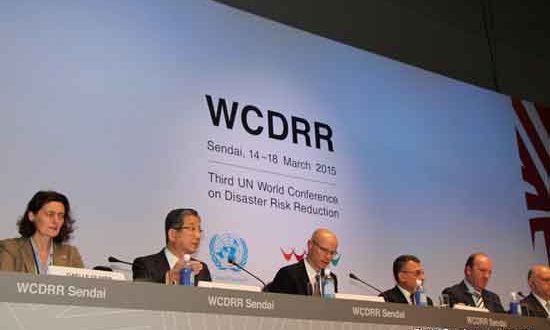What is Sendai Framework?
Article 1 – Background
Life has always had to fight with natural disasters and hazards for survival. Rapid advancements in science and technologies, industrialization, population growth, unplanned urbanization with huge people clusters, depletion of mother earth’s natural resources coupled with the effects of deforestation and climate changes has greatly added to hazards and disasters risk. The potential of losses is severely increased. There is need to plot for sustainable development and to build up the resilience to face the worst and recover quickly. Adequate measures need to be put in place locally and globally to reduce disaster risks and losses.
The Sendai Framework for Disaster Risk Reduction 2015-2030 (Sendai Framework) is the first major International agreement of the post-2015 development agenda. It is important to review the developments leading up to the Sendai Framework Agreement, before we review the agreement itself.
‘World Conferences on Disaster Risk Reduction’ is a series of UN conferences focusing on disaster and climate risk management in the context of sustainable (viable) development. The United Nations Office for Disaster Risk Reduction (UNISDR) serves as the co-coordinator body.
The conferences bring together Government officials and other stakeholders, such as NGOs, Civil Society organizations, and Local Governments and Private Sector representatives from around the world to discuss how to strengthen the sustainability (viability of development) by managing disaster and climate risks.
The first conference was the ‘Yokohama Strategy & Plan of Action for a Safer World’, held in Yokohama Japan from 23rd May 1994 to 27th May 1994. It focused on guidelines for natural disaster prevention, preparedness and mitigation. It recognized that risk assessment is the first step to adoption of adequate and successful disaster reduction policies and measures. Appreciating that primary responsibility for protecting the people, assets and infrastructure from natural disasters of the country; it called on the International Community to demonstrate strong political determination and assist with all resources, the needs of the developing countries – particularly the least developed countries. The conference laid down 10 guiding principles.
This was followed by the ‘Hyogo Framework for Action 2005-2015’, held in Kobe Japan from 18/01/2005 to 22/01/2005. The third conference was in Sendai, Japan from 14/03/2015 to 18/03 /2016.
It should really not be a surprise that all the three ‘Disaster Reduction Conferences’ were held in Japan. Due to its geographical location, Japan has faced the wrath of many natural disasters. The international community has always saluted the resilience of the Japanese people in facing up to these disasters and it has much to teach the rest of the world.
Links – reference ‘Yokohama Strategy & Plan of Action for a Safer World – 1994’
https://www.unisdr.org/we/inform/publications/8241
http://reliefweb.int/report/world/review-yokohama-strategy-and-plan-action-safer-world-aconf206l1


